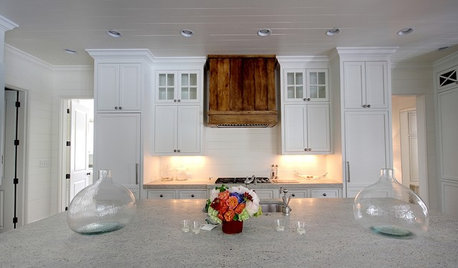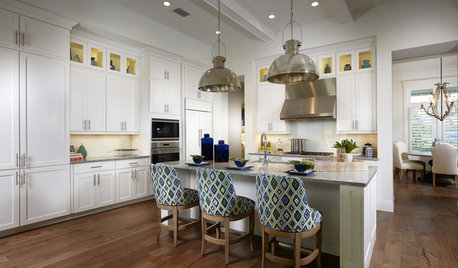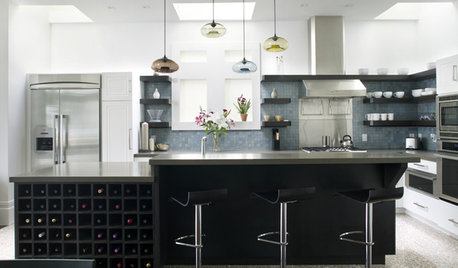Vent Hood Question
subonim
10 years ago
Related Stories

REMODELING GUIDESPlanning a Kitchen Remodel? Start With These 5 Questions
Before you consider aesthetics, make sure your new kitchen will work for your cooking and entertaining style
Full Story
KITCHEN DESIGNA Cook’s 6 Tips for Buying Kitchen Appliances
An avid home chef answers tricky questions about choosing the right oven, stovetop, vent hood and more
Full Story
DOORS5 Questions to Ask Before Installing a Barn Door
Find out whether that barn door you love is the right solution for your space
Full Story
GREEN DECORATING8 Questions to Help You See Through Green Hype
With the ecofriendly bandwagon picking up some dubious passengers, here's how to tell truly green products and services from the imposters
Full Story
KITCHEN DESIGNHow to Choose the Right Hood Fan for Your Kitchen
Keep your kitchen clean and your home's air fresh by understanding all the options for ventilating via a hood fan
Full Story
KITCHEN APPLIANCESThe Many Ways to Get Creative With Kitchen Hoods
Distinctive hood designs — in reclaimed barn wood, zinc, copper and more — are transforming the look of kitchens
Full Story
KITCHEN DESIGNWhat to Know When Choosing a Range Hood
Find out the types of kitchen range hoods available and the options for customized units
Full Story
KITCHEN DESIGNWood Range Hoods Naturally Fit Kitchen Style
Bring warmth and beauty into the heart of your home with a range hood crafted from nature's bounty
Full Story
SHOP HOUZZShop Houzz: Large Kitchen Appliance Sale
Save up to 25% on modern ovens, ranges, cooktops, hoods, vents and more
Full Story0








kaseki
cookncarpenter
Related Professionals
Bethpage Kitchen & Bathroom Designers · Four Corners Kitchen & Bathroom Designers · Salmon Creek Kitchen & Bathroom Designers · Southampton Kitchen & Bathroom Designers · South Farmingdale Kitchen & Bathroom Designers · Feasterville Trevose Kitchen & Bathroom Remodelers · Hopewell Kitchen & Bathroom Remodelers · Centerville Kitchen & Bathroom Remodelers · Overland Park Kitchen & Bathroom Remodelers · Shawnee Kitchen & Bathroom Remodelers · Southampton Kitchen & Bathroom Remodelers · Marco Island Cabinets & Cabinetry · Wilkinsburg Cabinets & Cabinetry · Tabernacle Cabinets & Cabinetry · Atascocita Cabinets & CabinetrysubonimOriginal Author
cookncarpenter
kaseki
subonimOriginal Author
kaseki
subonimOriginal Author
kaseki
subonimOriginal Author
cookncarpenter
subonimOriginal Author
weissman
cookncarpenter
kaseki
cookncarpenter
subonimOriginal Author
kaseki
subonimOriginal Author
kaseki